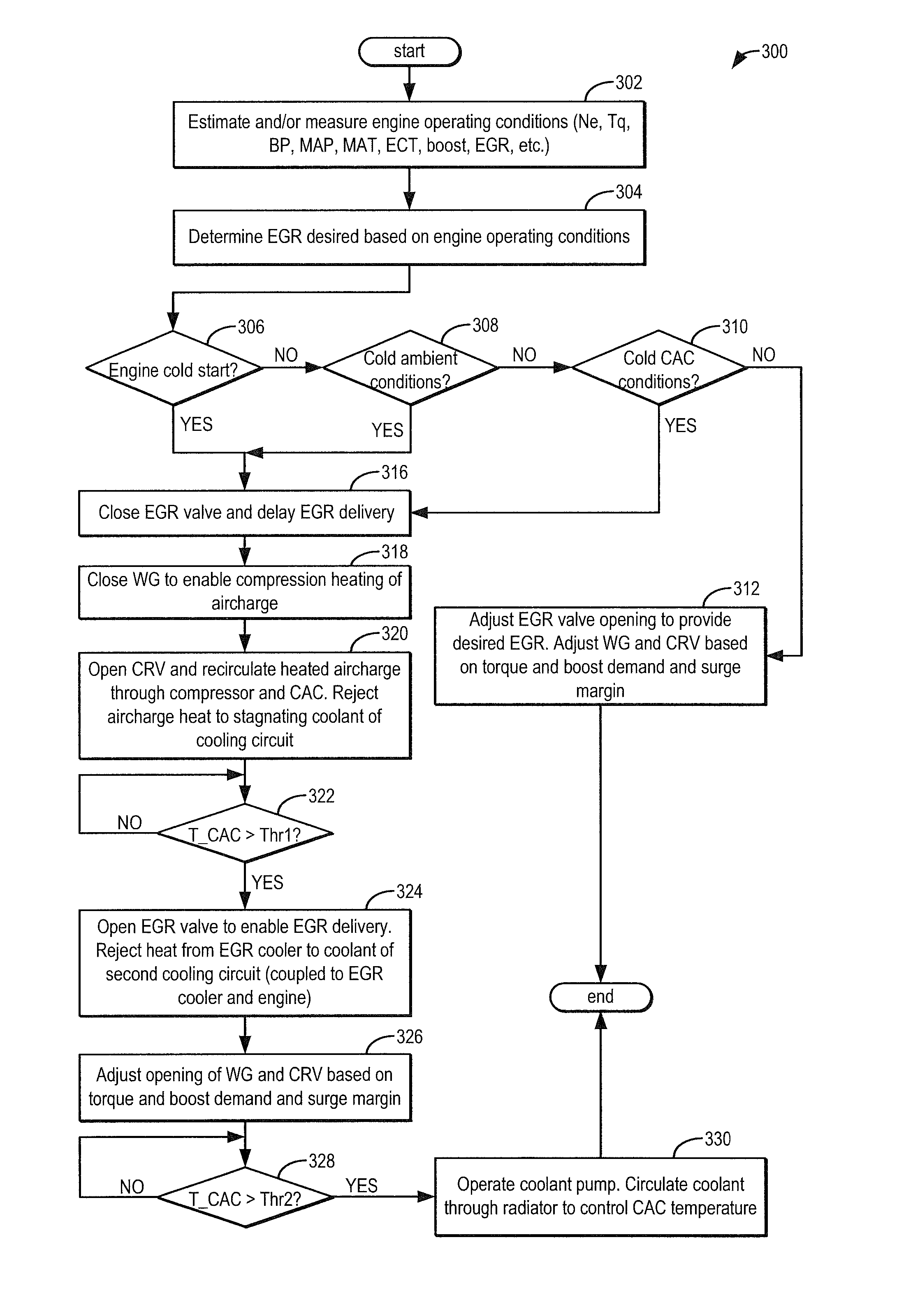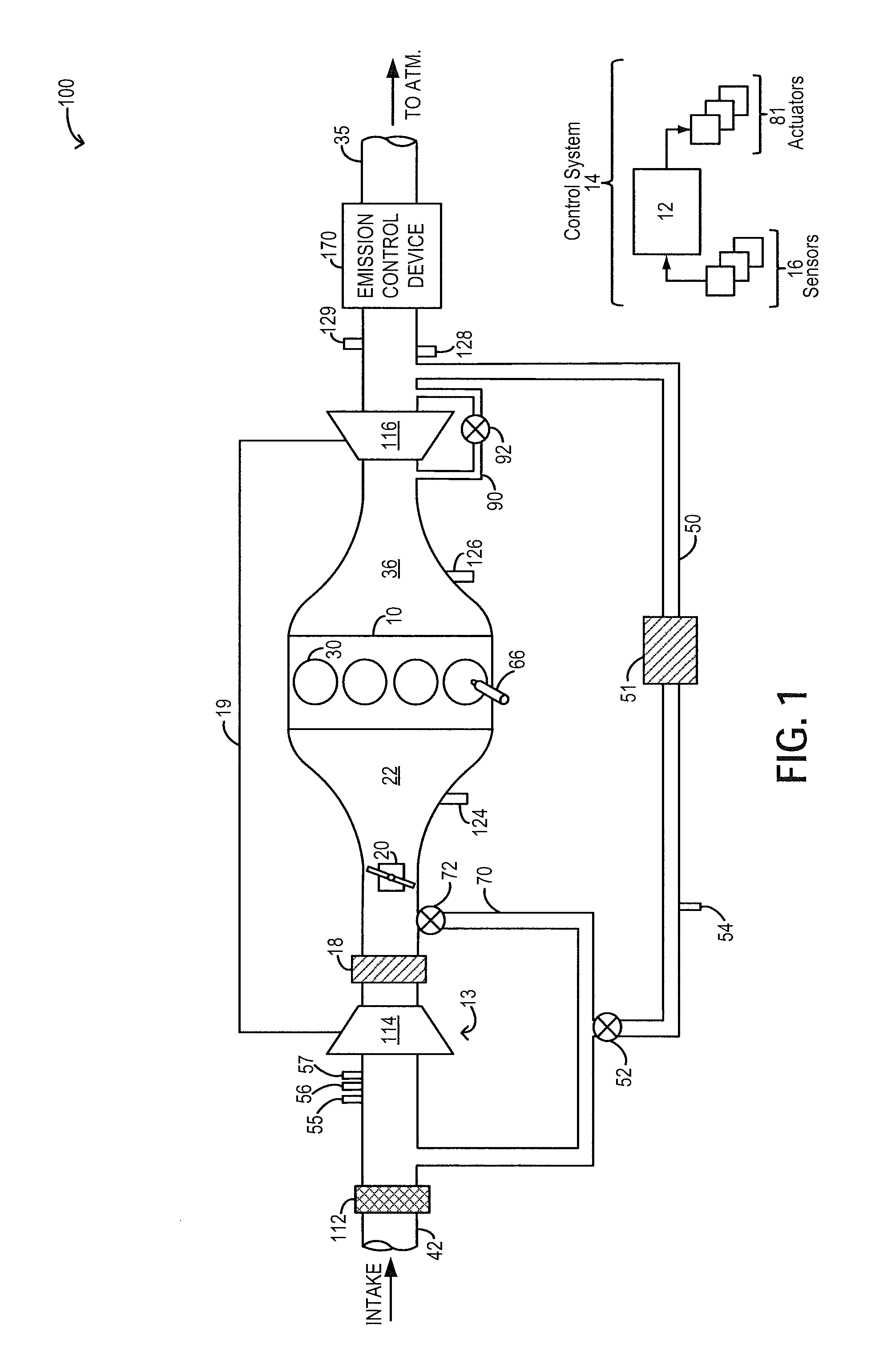Methods and systems for condensation control
a condensation control and condensation technology, applied in the direction of electric control, machines/engines, mechanical equipment, etc., can solve the problems of condensation build-up at the cac, the coolant temperature in the engine cooling circuit may not be high enough to transfer sufficient heat to the cac cooling circuit, and the misfire and nvh problems, so as to improve the peak power output, increase the charge density, and increase the fuel economy
- Summary
- Abstract
- Description
- Claims
- Application Information
AI Technical Summary
Benefits of technology
Problems solved by technology
Method used
Image
Examples
Embodiment Construction
[0014]Methods and systems are provided for recovering exhaust heat from an engine system, such as the engine system of FIG. 1, to warm charge flowing through a charge air cooler (CAC). In doing so, intake aircharge and coolant flowing though the charge air cooler's cooling circuit (such as the circuit of FIG. 2), can be warmed. An engine controller may be configured to perform a control routine, such as the routine of FIG. 3, to recover exhaust heat by closing a wastegate during cold conditions to increase exhaust pressure and temperature upstream of a turbine. By raising the backpressure, work is extracted from the exhaust blow-down energy. Thus turbine power is transferred to the intake air via the compressor. By concurrently opening a compressor recirculation valve, the heated charge can be recirculated across the CAC, thereby warming the CAC cooling circuit. EGR delivery may be initiated once the CAC has been sufficiently warmed. An example adjustment is shown with reference to ...
PUM
 Login to View More
Login to View More Abstract
Description
Claims
Application Information
 Login to View More
Login to View More - R&D
- Intellectual Property
- Life Sciences
- Materials
- Tech Scout
- Unparalleled Data Quality
- Higher Quality Content
- 60% Fewer Hallucinations
Browse by: Latest US Patents, China's latest patents, Technical Efficacy Thesaurus, Application Domain, Technology Topic, Popular Technical Reports.
© 2025 PatSnap. All rights reserved.Legal|Privacy policy|Modern Slavery Act Transparency Statement|Sitemap|About US| Contact US: help@patsnap.com



